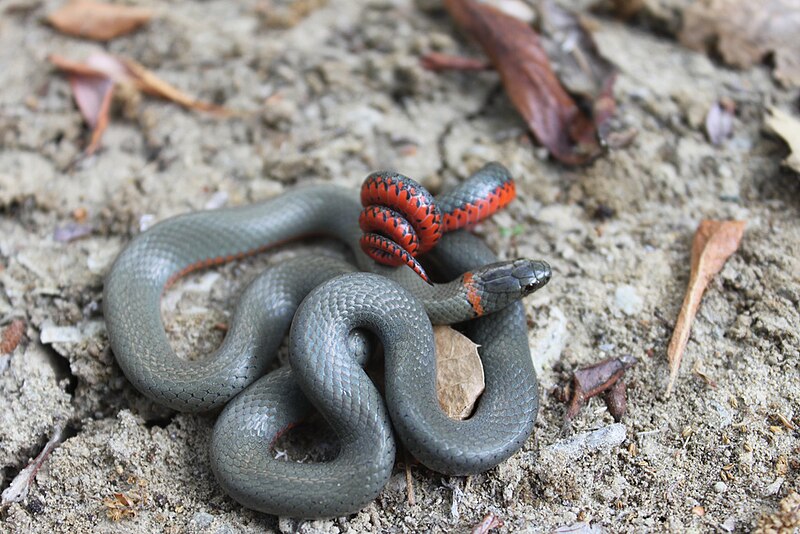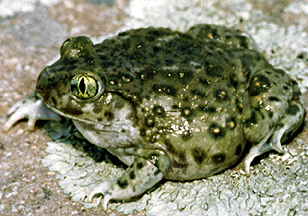 I’ve recently posted information concerning a petition that seeks Endangered Species Act protection for 53 US herps. Many readers applauded the news, but some were concerned about potential limitations on their ability to keep protected species. As they correctly pointed out, responsible pet owners have made important contributions to the conservation of many species (please see article below). In the course of my work as a zoologist, I’ve often dealt with federal, state and international permits, and continue to assist zoos with related issues. Today I’d like to explain a bit more about this proposal, which was championed by the Center for Biological Diversity, and how it may impact target species in the wild and captivity.
I’ve recently posted information concerning a petition that seeks Endangered Species Act protection for 53 US herps. Many readers applauded the news, but some were concerned about potential limitations on their ability to keep protected species. As they correctly pointed out, responsible pet owners have made important contributions to the conservation of many species (please see article below). In the course of my work as a zoologist, I’ve often dealt with federal, state and international permits, and continue to assist zoos with related issues. Today I’d like to explain a bit more about this proposal, which was championed by the Center for Biological Diversity, and how it may impact target species in the wild and captivity.
The ESA: Pros and Cons for Herp Keepers
Although federal red tape complicates life for private herp owners, the Endangered Species Act (ESA) remains our nation’s most powerful conservation tool. A recent study revealed that the ESA is 99% effective in preventing extinctions…once a species is listed, its survival is almost guaranteed. Benefits to such species extend beyond permit requirements – habitat protection, research funds, compilation of recovery plans and other possibilities arise. This post lists frequently asked questions concerning the ESA.
In common with most herpetologists, I started out as a hobbyist, and I maintain a personal collection to this day. The efforts of volunteer wildlife rehabilitators, zoo docents, “citizen scientists” and hobbyists have been of enormous help in my work, and I’ve acknowledged this in many articles and all of my books. Private ownership of ESA-protected animals remains possible, as well it should, but restrictions apply; please write in if you need assistance. I remain in favor of responsible herp ownership…please see this article for more thoughts on the contributions of private herp owners.
The Scope of the Problem
Both here and abroad, reptiles and amphibians face emerging diseases, habitat loss, introduced species, collection for the food and pet trades, pollution and other threats. Turtles and amphibians are considered to be in a crisis situation by many conservationists.
As of 2011, the IUCN listed 1,900 amphibian and 664 reptile species as endangered or threatened with extinction. As many as 200 amphibians may have become extinct in recent years as a result of Chytrid infection (please see this article). But this is the mere tip of the iceberg, as many species have not been evaluated, and we lack even basic information on at least 25% of the world’s herps.
Only 58 reptile and amphibian species are protected under the ESA. Herpetologists estimate that 82% of the USA’s vulnerable herps have no protection at all; please see this article for information on rare but unprotected native amphibians.
The Center for Biological Diversity’s Proposal
 Filed on July 11, 2012, the CBD’s ground-breaking proposal spans 450 pages and seeks ESA protection for 53 herps in 45 states (you can see a state-by-state list here). The largest effort of its kind, the proposal is supported by E.O. Wilson, Thomas Lovejoy and other eminent biologists.
Filed on July 11, 2012, the CBD’s ground-breaking proposal spans 450 pages and seeks ESA protection for 53 herps in 45 states (you can see a state-by-state list here). The largest effort of its kind, the proposal is supported by E.O. Wilson, Thomas Lovejoy and other eminent biologists.
Included among the animals of concern are 24 salamanders (an often-neglected group), 6 frogs/toads, 10 lizards, 6 turtles and 7 snakes, some of which have lost 95% of their original habitat. I was pleased to see that both well-known (Wood Turtles, Florida Pine Snakes) and little-studied (Short-Tailed Snake, Green Salamander) species were included.
Following is a sample of the species proposed by the CBD. I think you’ll be surprised at the lack of protection currently given to most, despite the fact that they have long been in obvious decline.
Alligator Snapping Turtle, Macroclemmys temmincki
The Bronx Zoo’s 205-pound Alligator Snapper, who was under my care for many years, has inspired the passions of legions of turtle enthusiasts (please see photo). But zoos may be the only place to see these magnificent creatures in the near future. Although likely extinct in 5 of the 14 states within their range, and absent from 95% of their habitat, Alligator Snappers are still legally harvested for food in some places!
Cascade Cave Salamander, Eurycea latitans
Found only in several caves in one Texas county, this neotenic aquatic salamander rarely if ever sees the light of day. It is extremely sensitive to water quality, and threatened by a falling water table and pollution of the underground streams it inhabits. Although protected in Texas, nothing has been done to preserve its tiny habitat.
Key Ring-Necked Snake, Diadophis punctatus acricus
This colorful, 6-inch-long snake is limited to shoreline limestone ridges on several of Florida’s Keys. Residential development has claimed 98% of its habitat, and introduced Fire Ants threaten the remaining populations. It is protected from collection (not a factor in its rarity) but not from habitat loss.
Western Spadefoot Toad, Spea hammondii
Eastern Spadefoot Toads have always amazed me with their ability to appear at breeding ponds, seemingly out of nowhere, after rainstorms. I’ve not found their western cousin, and may never do so if it receives only the limited protection offered by its current status as a “species of special concern”. The Western Spadefoot’s survival is hampered by a small natural range and a dependence on vernal pools. Found only in grassy scrub habitats from San Francisco to northern Baja, Mexico, this unusual burrower has lost 80% of its habitat.
Yuman Desert Fringe-Toed Lizard, Uma rufopunctata
Skin-fringed toes enable this desert-dweller to skim over the wind-blown sand. These toes, along with over-lapping eyelids and sealable nostrils and ears, render it among our most unique lizards. Although this species’ Arizona range can be measured in acres, the Yuman Desert Fringe Toe lacks state protection.
Further Reading
Fringe-Toed Lizard Natural History
Millions of Turtles Exported Yearly from the USA
Alligator Snapping Turtle videos & photos
Center for Biological Diversity (sign up for conservation news alerts)
San Bernardino Ringneck Snake image referenced from wikipedia and originally posted by Mark Herr
 That Reptile Blog – Reptile, Amphibian and Exotic Pet Care and Information
That Reptile Blog – Reptile, Amphibian and Exotic Pet Care and Information


